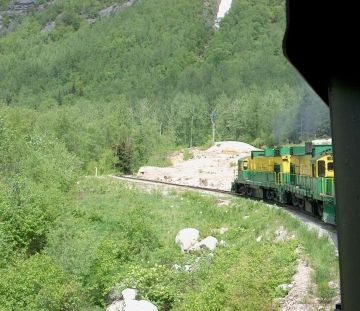
The discovery of gold
in the Klondike started one of the most remarkable stampedes of people
in history.
Getting to
the goldfields, though, was very difficult, and hundreds of companies
were formed to get people there by ship, wagon, horse, dogsled,
railroad and even by balloon!
The White Pass
& Yukon Route is the only one of those companies which still
survives today.
|
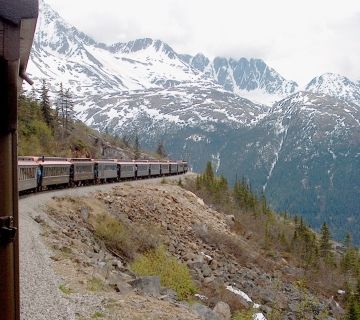
Many people said that a railroad could never be built through the
granite of the Coastal Mountains. They were almost right - it was an
incredible challenge to engineers and laborers alike.
Construction on
the 112-mile line to Whitehorse, Yukon began on May 27, 1898 in
Skagway, Alaska. Just over 2 years later, on July 29, 1900, the
final spike was driven at Carcross.
|
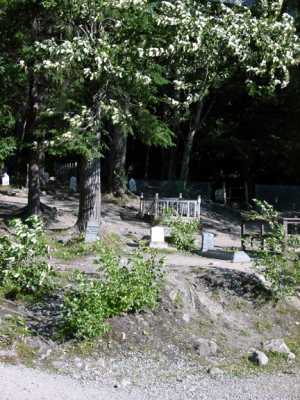 Left:
The train slowly passed through Gold Rush Cemetery, the resting-place
for early Skagway gold rush residents including "boss"
gangster Jefferson "Soapy" Smith and town hero Frank Reid.
Both died as a result of their famous final gunfight. Left:
The train slowly passed through Gold Rush Cemetery, the resting-place
for early Skagway gold rush residents including "boss"
gangster Jefferson "Soapy" Smith and town hero Frank Reid.
Both died as a result of their famous final gunfight. |
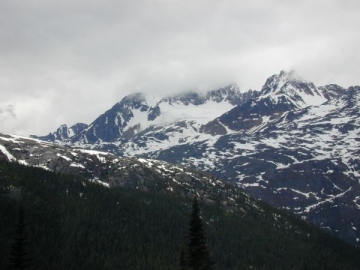
Combining British financing, American engineering, and Canadian
contracting, the White Pass and Yukon was the first major civil
engineering project on the continent above the 60th degree of nortern
latitude. Completed in 27 months using only hand tools, black
powder, and regional timber, the White Pass and Yukon rises almost 2,900
feet from sea level at the port of Skagway to the White Pass summit on
the U.S.-Canada border in just 20 miles, accomplishing one of the
steepest climbs of any railroad in the world.
|

Built for approximately $10 million to promote the Klondike Gold
Rush around the turn of the century, the 110-mile narrow-gauge
railway remained an important part of the mining industry -
transporting gold, silver, copper and lead ore from Canadian
mines across the coastal mountain range to Alaskan ports - until
it was closed in 1982. The railroad found new life six
years later as a thriving excursion line serving the cruise-ship
industry. The round trip from Skagway to White Pass was a
highlight of our Alaska experience.
|
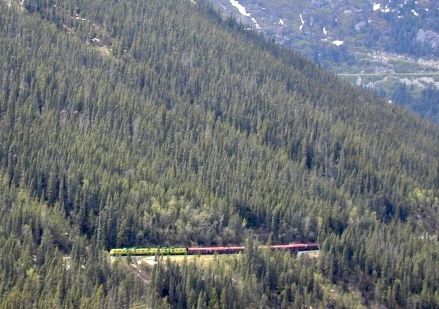 |
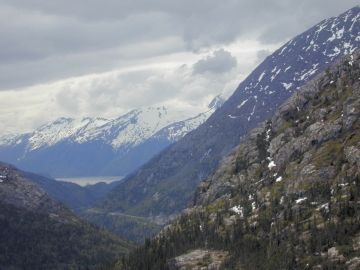 |
 Left:
The train slowly passed through Gold Rush Cemetery, the resting-place
for early Skagway gold rush residents including "boss"
gangster Jefferson "Soapy" Smith and town hero Frank Reid.
Both died as a result of their famous final gunfight.
Left:
The train slowly passed through Gold Rush Cemetery, the resting-place
for early Skagway gold rush residents including "boss"
gangster Jefferson "Soapy" Smith and town hero Frank Reid.
Both died as a result of their famous final gunfight.




